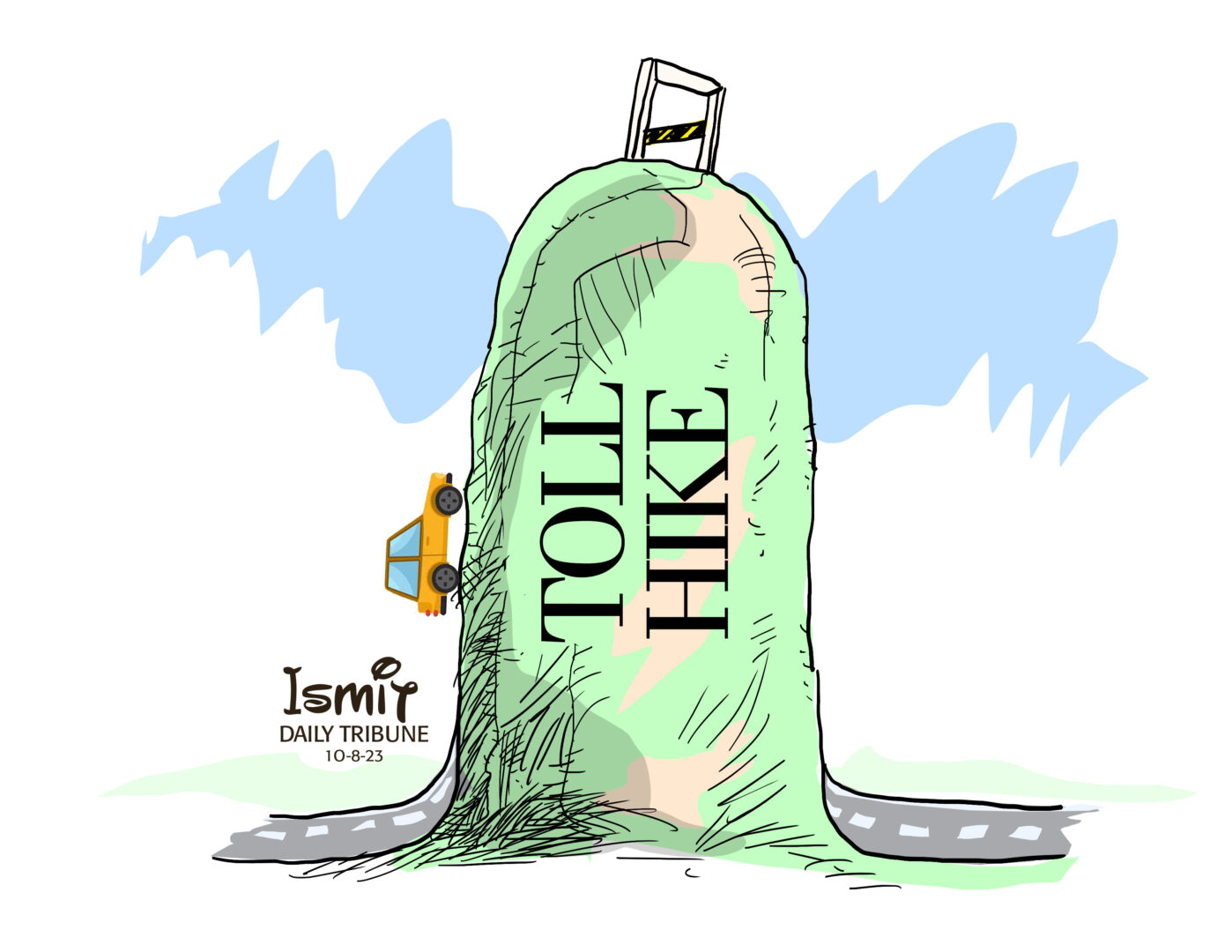In the latest rate hike petition review, the Toll Regulatory Board should consider the record of inefficiency of the operator of the South Luzon Expressway, or SLEX.
After a provisional toll hike for the North Luzon Expressway took effect last 15 June, San Miguel Corp. SLEX Inc.’s plea for a toll increase is in the final review phase.
TRB said higher fees are likely since it is part of authorized periodic adjustments, implying that only the extent of the adjustments is to be determined.
TRB is particularly reviewing if the operator has met its obligations in the concession agreement.
Motorists, however, are periodically inconvenienced when passing through the tollway due to maintenance issues that result in traffic build-up.
In November last year, long queues formed at the SLEX toll plaza after the machines refused to read the Radio Frequency Identification or RFID cards.
To deflect blame, SMC attributed the problem to the fiber optics of their Internet provider that caused a system glitch in the RFIDs.
Among the resolutions reached after the huge blunder was that the TRB would perform a regular audit, which did not happen as regularly as motorists were led to believe since the RFID foul-up continues to this day.
TRB then said the bottom line should be that motorists should not be inconvenienced.
The toll roads were among the solutions the government resorted to solve the Carmageddon that happens particularly near the holiday season when most Luzon residents want to be in Manila to shop.
A study conducted by global firm Boston Consulting Group showed that Metro Manila has the third worst road congestion in Southeast Asia. According to the study, motorists and commuters spend an average of 66 minutes daily in traffic.
A Japan International Cooperation Agency study indicated that the economy loses P3.5 billion daily due to traffic congestion in Metro Manila. If interventions are unsuccessful, the situation can worsen, translating the losses to P5.4 billion a day by 2035.
Under its contract with the government, the tollway operator must immediately apply intervention measures to avoid inconveniencing motorists.
The RFID system is supposed to allow the seamless travel of motorists charged for passing through privately operated roads. However, some road user advocates say that fees should be kept private since taxpayers pay for the maintenance of roads.
Long lines, however, form at most expressways from 7 to 9 a.m. for motorists entering Metro Manila due to the antiquated RFID system.
In the November 2022 gridlock, SMC decided to lift the toll barriers, but the slow traffic movement continued because of the huge volume of vehicles that had massed at the toll gates.
The lifting of the toll bar is provided under the TRB’s implementing guidelines for contactless toll payments.
It provides that barriers should be lifted if the queuing length reaches one kilometer for cars and light vehicles and 1.2 kilometers for bigger transports.
“Approaching the toll plaza, the toll barriers shall be raised for at least five minutes, allowing vehicles toll-free pass-through until the traffic flow normalizes,” according to the rules.
Compliance with minimum performance standards must be ensured to give motorists a fair shake amid the progressively increasing toll fees.
Tollway operators must be compelled to ensure that the roads for which fees are being paid for their use ensure safety and convenience, and do not affect the economic life of vehicles.
The payments should be commensurate to the level of service that motorists enjoy when passing through the private-operated expressways.
